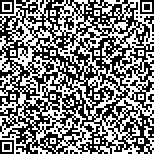下载中心
优秀审稿专家
优秀论文
相关链接
摘要

城市热岛的定量化分析对于客观刻画热岛的物理特征、了解其对城市人居环境质量的影响等具有重要意义.针对区域尺度上城市热岛遥感研究缺乏定量、有效衡量指标的状况,为充分反映热岛信号的空间变化特征,按照热岛检测-热岛信号函数模拟-热岛容量建模的思路,建立了城市热岛容量模型.以北京城市热岛为对象的应用实例证明该模型能够综合热岛强度和热岛面积等多方面信息,满足城市热岛定量化分析的需求.研究结果表明,由于不同主导因子的影响,北京城市热岛存在显著的昼夜和季节差异.
Alongwith rapid urbanization, urban heat island (UHI) hasbecome one of themostseriousurban problems,because of its mi pacts on the urban microclmi ate, air quality, energy consuming, public health and so on. W ith the adventof thermal remote sensing technology, remote observations ofUHIs become the focus ofurban remote sensing.While some progresseshave beenmade, remote sensing study ofUHIhasbeen slow to mi prove qualitative description of thermal patterns and smi ple correlations. As a common indicator ofUHI, magnitude is often used to reflect the degree of UHI occurrence, and itcan be computed as the different indicatorbetween the temperatures ofurban surfaces and rural surfaces. However, the extent ofUHI is often neglected when measuring an UHI as a whole. In order to explore a quantitative andmore effective indicator forUHIdynamicmonitoring atregional scale, ami ing atderiving its spatial feature and facilitating the comparisons between differentUHIs occur atdifferent tmi e or different areas based on remote sensing mi ageries such as NOAA AVHRR and Terra/AquaMODIS data, this paper proposes a new parameter-UHI volume to integrateUHI magnitude with extent effectively. After the subtraction of the rural contribution in the land surface\ntemperature (LST) mi age, the isolatedUHI signature is suitable to use a least-squaresGaussian surface and then theUHI volume is calculated as a double integralof theUHI signature function over its footprint, towhich the extentUHIhappens.This study investigates the applicability of this volumemodelbased on examination of thirtyEOS-TerraMODIS level 1B mi ageries ofBeijing city and its surrounding suburban areas, and the mi agerieswere acquired between 2004—2006.These mi ageries include fifteen nighttmi e scenes, with their corresponding daytmi e scenes. Firstly, the resampled digital elevationmodel (DEM) data of the study area, the normalized difference vegetation index (NDVI) and the modified normalized differencewater index (MNDWI) are used to extractthe urban areas. Secondly,a smi plifiedmethod is applied to retrieve the land surface temperature from MODIS channel 31 and channel 32, accounting for the land surface emissivity. Thirdly, four transects across the center ofBeijing city at different directions includingN-S, W-E, NW-SE andNE-SW are selected to detect theUHIs to ensure the application of the volumemodel is valid. The detections reveal that each of the UHI in Beijing City at different tmi e has a single core and its spatial distribution is symmetrical as a whole, despite there are some smallUHIs in the outskirts, so the volume model presented is appropriate for the UHI smi ulations.Results of theUHI smi ulations demonstrate that: (1)The correlation between themodeled UHI signatures and the corresponding true values is close, especially for the nocturnalUHIs. This fact indicates that theGaussian is suitable and the volumemodel is valid forUHI smi ulation atregional scale in Beijing. (2)There is obviousUHI effect in both daytmi e and nighttmi e in the summer. In the spring, autumn andwinter, there isUHI effect in the nighttmi e, while noUHI in the daytmi e; theUHImagnitude and volume shows thatthe diurnalUHI is intenser than the nocturnalUHI, and the difference of the volume between the diurnal and nocturnalUHIs seems to be stable.(3)Because of different dominant factors including natural and anthropogenic factors and their different influences, the changes of the nocturnal UHIs are complicated, especially the extents ofUHIs. The UHI magnitude and volume shows that the nocturnalUHI effect is intensest in thewinter, whileweakest in the summer. The application in Beijing suggests that the volumemodelmay be a promising routine tomeasureUHIs quantitatively based on remote sensing mi ageries. However, the precondition of this modelurges that its applicability in other cities should be varified further.

